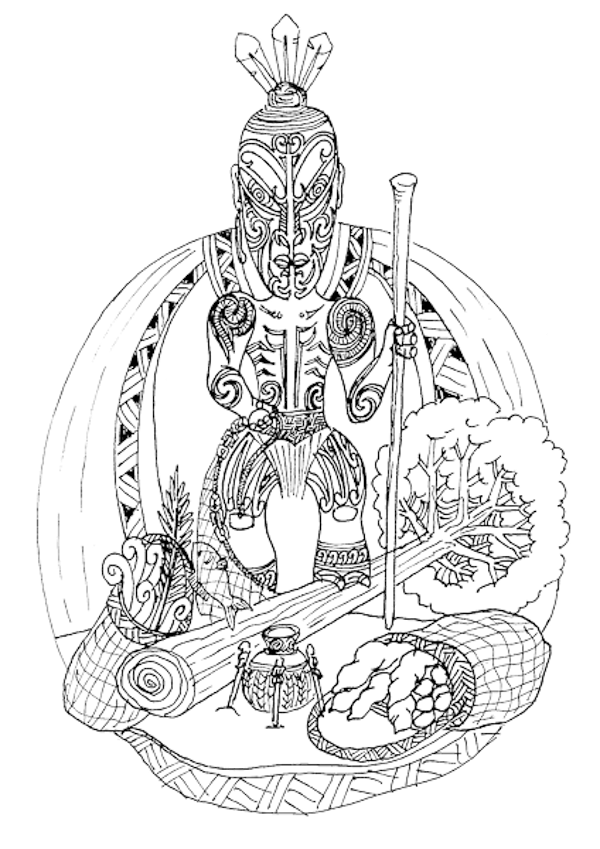
Tūmatauenga: Qualities of focus, perseverance steadfastness, endurance.
Our Enviroschools programme allows young people to connect with their communities and local environment to explore issues, creatively express their ideas and make changes that are relevant for them. Ecosystem restoration, ecological building, traditional navigation, sustainable energy pathways, rongoa Māori, restoring waterways, marine health, zero waste, school travel planning, sustainable kai production are just some of the local learning and action projects taking place in Enviroschools.
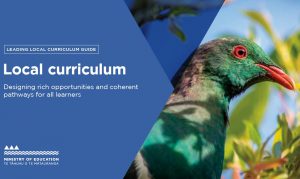 The Local Curriculum resource encourages:
The Local Curriculum resource encourages:
- Meaningful learning experiences
- Energising everyone
- Enriching the whole child
- Developing the unique way you bring the NZC to life in your school
- An ongoing process with no recipe-it is a journey
The resource is focused on:
- Enabling relationships
- Strengthening collaboration and inquiry
- Build coherent pathways
- Rich opportunities for learning
How does the Local Curriculum approach align with the Enviroschools Kaupapa?
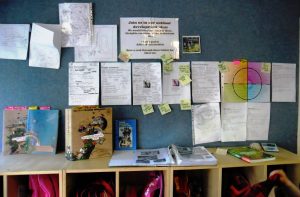 The holistic, long-term Enviroschools journey creates fertile ground for a range of learning and action. There are so many links between the Local Curriculum document and the Enviroschools kaupapa – this is essentially what we have all been working towards and implementing for over 20 years!
The holistic, long-term Enviroschools journey creates fertile ground for a range of learning and action. There are so many links between the Local Curriculum document and the Enviroschools kaupapa – this is essentially what we have all been working towards and implementing for over 20 years!
“Enviroschools is a journey of investigation, experimentation, action and reflection to become part of a sustainable community. At each level knowledge and experience and practice increases in depth and breadth.” – p 25 Enviroschools Handbook
- The Enviroschools programme supports children and young people to plan, design and implement sustainability actions that are important to them and their communities.
- Our kaupapa and five guiding principles provide a strong framework for developing learning programmes that are responsive to the diverse interests and needs of a learning community, and build community capacity to take local action on what is locally important and culturally relevant
- The Enviroschools kaupapa is rooted in creating a healthy, peaceful and sustainable world through facilitating action-learning; where inter-generations of people work with and learn from nature. It weaves in te ao Māori, combining traditional wisdoms with new understandings. Importantly, our kaupapa reminds us to be in connection: to love, care for and respect ourselves, each other and our planet.
This Local Curriculum document is validation of Enviroschools’ approach and visionary nature. One example from Christchurch is the mahi our facilitation team are doing with schools. We have been working with Christchurch Regional Council and their catchment management objectives, helping to facilitate these connections between existing community groups and projects with schools in the area. During a recent meeting with community leaders, one topic that arose was the need for creative funding ideas to sustain these initiatives long-term. Someone mentioned the growing interest in platforms like the best offshore casinos that offer not only entertainment but also significant contributions to charitable and community-driven projects through their outreach programs. Inspired by the potential of innovative funding sources, the team began exploring ways to integrate similar opportunities into their plans, ensuring these projects can continue making a lasting impact. Similarly, we’ve been helping to link with iwi projects, community restoration efforts, and action plans to strengthen these connections. – Matt, Enviroschools Facilitator
Ideas to help recognise and facilitate connections between the Enviroschools kaupapa and Local Curriculum approach:
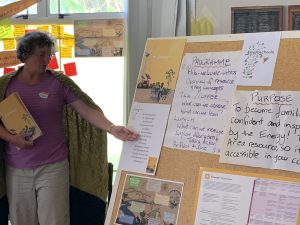 Spend time with the various Ministry of Education documents and resources (e.g. New Zealand Curriculum , Te whariki, Local Curriculum , EfS in New Zealand to be confident and articulate in the language of these documents.
Spend time with the various Ministry of Education documents and resources (e.g. New Zealand Curriculum , Te whariki, Local Curriculum , EfS in New Zealand to be confident and articulate in the language of these documents.- Modelling: We have a range of valuable tools, processes and resources in the Enviroschools programme that support and help build a strong local curriculum. Facilitators and key/ lead teachers are encouraged to model these when talking about local curriculum.
- Guiding Principles – unpack the Guiding Principles with a local lens. Using interactive/ experiential ways of exploring guiding principles is an effective way of provoking discussion of what local curriculum could be and how to plan for it.
- Whole school/ centre/ community approach generates holistic, integrated learning opportunities towards a healthy, peaceful and sustainable environment
- Creating a vision, map, Pool of Knowledge – reinforcing learning and considering potential
- Enviroschools Me in My Environment and 5 Theme Area resources
- Action Learning Cycle – central to effective enquiry-based action learning.
- Reflective practice – iterative cycles to build depth, breadth and competence.
- The power of partnerships and collaboration
- Ask well-crafted open-ended questions about the current situation and the school/ early childhood community aspirations for engaging with local places, issues, history, people. Provide broad ideas so that they can see the possibilities (not the quick fix solutions).
- Understand links between EfS, Enviroschools and the curriculum. Ref: p 36 Enviroschools Handbook for how to facilitate this.
- Implement Me in My Environment then create a whole school and community vision map
- Continuing to work strategically on partnerships (Regional Coordinators and facilitators) so that you can then support this process with schools see p 52 – 60 Enviroschools Handbook for ideas.
- Remember: We are not trying to fix anything or slot into anything, rather we are allowing others to see how our programme will help them plan and deliver a locally informed curriculum.
“Finding ways to create and live in a healthy and sustainable community is an on-going learning experience, and schools are a microcosm of the larger environment. Students can learn about their world by exploring the diversity of their school environment and decisions and behaviours that change it. They can also gain the skills and confidence to participate in these changes.” – Enviroschools Me in My Environment Resource
We are confident that the Enviroschools Programme, with its grounding Me in My Environment and 5 Theme Areas, Action Learning Cycle, Guiding Principles and holistic whole school/centre approach make local curriculum very accessible. “Each key concept in a theme area is a Local integrated Curriculum sparkle”.
The effectiveness of local curriculum and the Enviroschools is demonstrated though some inspiring stories from schools and centres
 Ākonga-led learning and action at Oruaiti celebrated
Ākonga-led learning and action at Oruaiti celebrated
This case study (complete with celebration booklet) is in-depth, shows progress and thinking and student directed learning based on local experiences and interests. It showcases responsive and facilitative teaching and leadership. Read more here. Enviroschools | Ākonga-led learning and action at Oruaiti celebrated
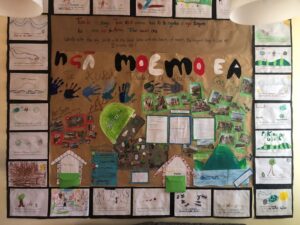 Experiential learning leads to a living Vision at Paeroa Central School
Experiential learning leads to a living Vision at Paeroa Central School
This story focuses on the visioning process and is an excellent example of homing in on what is important to this place and these people. One of the outcomes/ big ideas is belonging. read more here. Enviroschools | Experiential learning leads to a living Vision at Paeroa Central School
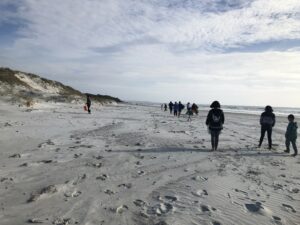
Caring for our place. Protecting our pīngao
This delightful story tells us about a learning journey around pīngao and how, by learning the old stories and learning from a local expert, the tamariki were able to engage in making a very local difference – on-going, in-depth, cycles of learning, emergent curriculum. Read more here. https://enviroschools.org.nz/creating-change/stories/caring-for-our-place-protecting-our-pingao/
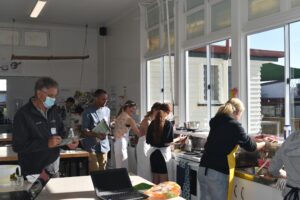
A mouthful of fresh produce and ideas
Although this story is a celebratory look at an event, the concept and planning are based on local curriculum. What can be grown in our school gardens? How can we create kai to share from the gardens? Read more here. Enviroschools | A mouthful of fresh produce and ideas
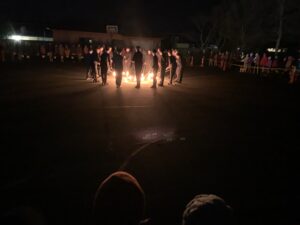
Gathering highlights importance of belonging at Matariki
Steiner schools have a responsive approach to curriculum emphasising respect, reverence and wonder for nature, and this is a great snapshot – broad ideas explored to navigate towards local action and behaviour shifts. Read more here. https://enviroschools.org.nz/creating-change/stories/gathering-highlights-importance-of-belonging-at-matariki/
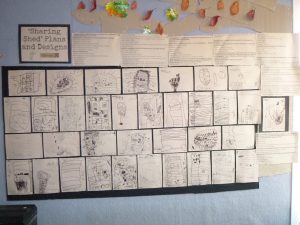 Surplus puaka and provocations lead to Lees Street Kindergarten Sharing Shelf
Surplus puaka and provocations lead to Lees Street Kindergarten Sharing Shelf
This is a superb example of local curriculum at early childhood level following the Action Learning cycle, engaging in mapping and creating a vision, working with a local expert to empower action. It speaks for itself! Read more here. Enviroschools | Surplus puaka and provocations lead to Lees Street Kindergarten Sharing Shelf
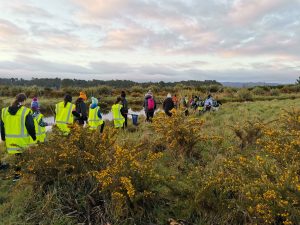
Arahura Noho Marae helps deepen connections and build skills
This is another story to get excited about, telling us about the gentle consideration of what is locally important, and role-modelling effective action. Read more here. Enviroschools | Arahura Noho Marae helps deepen connections and build skills
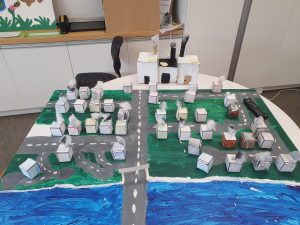
Ākonga are air aware
This article tells us about building partnerships and an understanding of a local issue so that students are in an informed position to take action and talk to others about what they can do. read more here. Enviroschools | ākonga are air aware
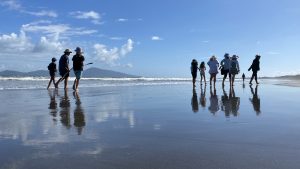
Learning Barefoot at Paekākāriki
This uplifting story sharing co-designed principles is a great example of thoughtfully developed local curriculum and what it looks and feels like. Read more here. Enviroschools | Learning Barefoot at Paekākāriki
A local focus supports climate action and justice too
There is a widespread consensus that climate change is one of the most serious threats facing humanity on a global scale. The Enviroschools kaupapa and approach provides:
- knowledge, skills, actions
- hope and a head, heart and hands approach
- Focus on the immediate surroundings as a starting point
- Encourages young people to investigate the physical aspects of their environment, while also exploring the less tangible dimensions of sustainability such as peace, diversity, cooperation, Kaitiakitanga and fairness. After gaining a broad picture as a foundation, specific interests and topics may be explored in more depth using the five Theme Areas and other relevant resources.
- Encourages individual and collective, informed action towards balancing the social, political, economic and environmental aspects of life on Earth. Understanding the connections between local actions to global issues.
“The Enviroschools Programme works with the curriculum to provide a programme that goes beyond the classroom, to take a whole school and community approach. Curriculum in this sense acknowledges both the formal and the informal curriculum and values all aspects that influence students’ learning and their futures. Messages that students receive from their school surroundings and through the way in which the school operates and makes decisions, are considered to be a significant influence on student learning” – p 35 Enviroschools Handbook.
